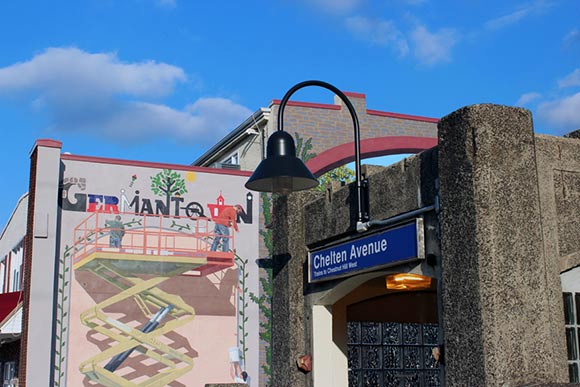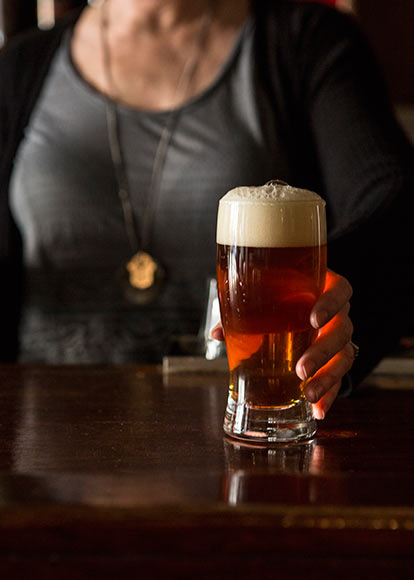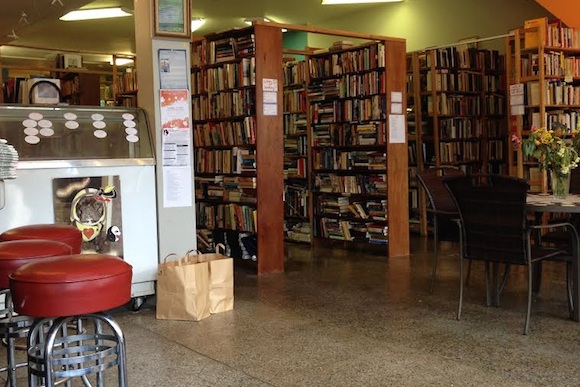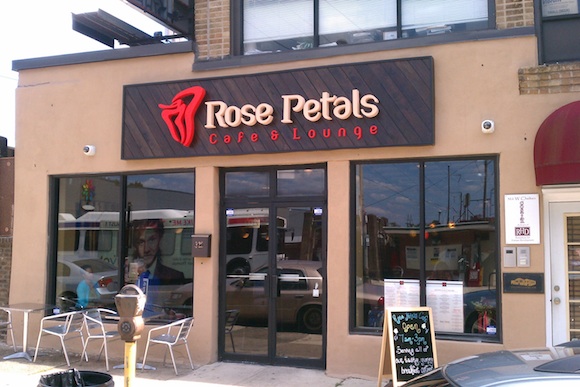
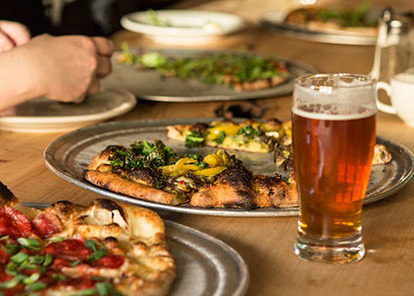

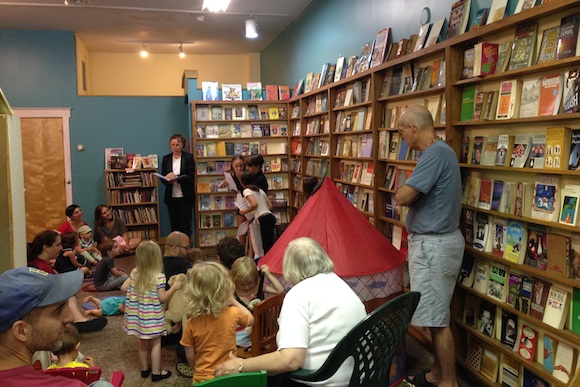

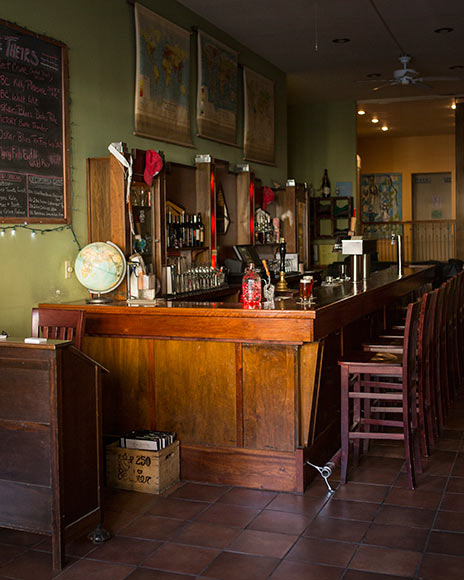
Northwestern Philadelphia could easily be mistaken for the suburbs. Its broad tree-lined streets and generously-sized detached houses are a stark contrast to the narrow blocks and tightly-packed rowhomes of Center City and its surrounding neighborhoods.
It's a world apart up there. And historically the inhabitants have comported themselves accordingly. There are stories of Germantown and Chestnut Hill residents leaving the word Philadelphia off their postcards. The latter neighborhood, long one of the city's most affluent, also bears the distinction (along with the Northeast) of having attempted to secede during the depths of the postwar urban crisis.
Germantown, Mt. Airy and Chestnut Hill are served by two parallel rail lines — Chestnut Hill West and Chestnut Hill East, installed in 1884 and 1854 respectively, after Philadelphia absorbed its surrounding independent municipalities. The neighborhoods of the Northwest were among the original bedroom communities. Each is supported by its own “Main Street,” with the compositions of those stroll-able avenues reflecting the surrounding neighborhoods.
There are numerous stops on either of the Chestnut Hill lines that would make a fun destination for a day trip. Be warned, though: during off-peak hours SEPTA only runs these lines once an hour (during the agency's pre-1983 takeover, they ran twice an hour off-peak, even more frequently during the rush hours, and were priced comparably with buses and subways). Flying Kite chose to hop aboard the Chestnut Hill West (erstwhile R8) train, hopping off at three distinct and worthwhile stops.
Chelten Avenue
The Chelten Avenue regional rail station expels travelers directly onto the titular thoroughfare. To the east, the avenue is more commercial and tends towards asphalt and fast food chain stores. On the south side of the street lies The House of Jin (234 W. Chelten Avenue), a moderately-priced Chinese-Japanese restaurant and bar, and the only place to get sushi in Germantown.
Long ago this historic neighborhood was a citadel of upper-class Philadelphia. But a majority of the whites fled (egged on by blockbusters) after the Second World War as the city's burgeoning African-American population — first middle-class and later working-class — escaped crowded and segregated North Philadelphia. As in so many cases, public policy and private prejudice re-segregated the newly African-American neighborhoods, although Germantown is still remarkably integrated in the broader context of urban America.
Across from the Chelten Avenue stop is the year-old Rose Petals Café and Lounge (322 W. Chelten Avenue), a breakfast and lunch spot specializing in waffles. (The restaurant is housed in Flying Kite's former On the Ground location; they were also one of the city's first Kiva Zip borrowers.) Rose Petals offers free wi-fi, monstrously large cups of coffee, and a playroom in back for kids who don't feel like waiting for the food. And they'll probably have to wait, especially on a Sunday, when there is often a line for seats. Rose Petals is worth it though: the fried catfish and grits (with a side of eggs and breakfast meat) is delicious. Other favorites include the waffle quesadilla and a breakfast sandwich that replaces bread with waffles.
Walk off the food coma to the west of the station, where the avenue reflects the typical charm of much of the residential Northwest. Trees and stately houses line both sides of the street, mixed in with apartment buildings, bodegas, hair salons and laundromats. Alden Park, a stunningly gorgeous apartment complex, towers at the end of the block where Chelten terminates at Wissahickon Avenue.
Allen Lane
West Mount Airy takes the leafiness quotient up a notch. In contrast to the recognizably urban soundscape of Chelten Avenue — idling cars blasting music, friends bellowing greetings across the busy street — alighting onto the sylvan silence of Allen Lane's platform is a bizarre experience. It's just so quiet.
The houses are mostly large, beautiful and detached, occasionally shading into attractive attached housing. Gardens bloom everywhere, spilling onto the sidewalk where neighborhood children sell fresh-squeezed lemonade for $1 a glass.
Germantown Avenue, West Mt. Airy's main drag, is four blocks east of the train station. These days, a lot of pubs have gotten into the brewing-their-own-beer thing, often with dubious results. Earth Bread + Brewery (7136 Germantown Avenue) is a happy exception. In addition to their excellent suds, the brewpub specializes in tasty flatbreads and salads, and hosts table tennis tournaments every Tuesday (accompanied by $2 brews).
Further to the north, past the Wawa, is Cantina Avenida (7402 Germantown Ave), serving up grilled octopus, mole fries (!), excellent guacamole and tongue tacos (there are, of course, other options for the squeamish). The margaritas and sangria are best enjoyed on the back patio, where you can sip your gargle while admiring the charming view.
Long time neighborhood staple McMenamin's Tavern is the place to go for sporting events and craft beers. The racially diverse crowd at the bar is testimony to West Mt. Airy's history of organized integration. When white populations elsewhere in the city fought to keep African-Americans out of their neighborhoods — and then fled when that didn't work — the middle-class liberals of Mt. Airy organized to welcome arriving black families, keep out blockbusting realtors and retain long time residents.
As Abigail Perkiss documents in her recently released history, Making Good Neighbors, the effort was a success: The black population expanded from 6.4 percent in 1955 to roughly 50 percent. Perkiss notes that West Mt. Airy was mostly a white middle-class community welcoming mostly black middle-class residents, but similar class considerations did not prevent mass white flight from Germantown, West Philadelphia, or the suburbs of today.
Across the street from McMenamin's is the Mi Puebla restaurant and bakery (7157 Germantown Ave), which makes killer flan.
A bit to the south is the Mt. Airy Read & Eat (7141 Germantown Ave), a book and coffee shop — Read & Eat took over the collection of the Walk A Crooked Mile bookstore, formerly housed inside the idyllic Mt. Airy stop on the Chestnut Hill East Line. They offer readings for children every Saturday, movie screenings in the back, and a range of other events.
Mt. Airy's commercial strip has “changed a ton just in the last year or so, it's really gotten more dense, with more activity, more shops and more restaurants,” says Jake Sudderth, the shop's owner. “A lot of new families moved in, there's been a lot of growth and a lot of new construction. We're seeing a lot of migration.”
Chestnut Hill West
The end of the line. Chestnut Hill feels like nowhere else in Philadelphia. Ascend from the train station onto Germantown Avenue, here transformed into a tony shopping district. There are hardly any vacant storefronts and more upscale chain stores, both of a regional (Iron Hill Brewery) and national (Starbucks) nature.
A few commercial landmarks of note include The Chestnut Hill Cheese Shop (8509 Germantown Avenue) — which used to have two competitors! — now the lone source of expensive brie and imported vinegar. Kilian Hardware (8450 Germantown Avenue) is a neighborhood mainstay; walking its aisles feels a bit like going back in time. A small child's plaintive wails upon the discovery of Zipf's Candies (8433 Germantown Avenue) couple-day closure testifies to its greatness: “Two days?? That's like two weeks!”
The Chestnut Hill Coffee Company (8620 Germantown Avenue) cranks out a tasty mint green iced tea (in addition to, presumably, coffee), which is something of an accomplishment. George T. Hobe's Antiques and Fine Art (8407 Germantown Avenue) is brimming with amazing artifacts — old oil paintings, toy dolls and assorted arcane. The relatively new Chestnut Hill branch of the legendary Weaver's Way Co-op (a Mt. Airy institution) has plenty of kombucha and bulk granola to satisfy (8424 Germantown Avenue).
Chestnut Hill's old bars are all worth visiting. The Tavern on the Hill (8636 Germantown Avenue) wins for being the Platonic ideal of a dark, homey English-style pub — but with way better food. (They have portabella fries!)
McNally's Tavern, originator of the famous “Schmitter” (cheesesteak on a kaiser roll with fried salami and special sauce) is literally next door (8634 Germantown Avenue) and is slightly better lit, unfortunately. But the food is just as good and the place is basically the neighborhood's only source of worthwhile hoagies.
Wander into the beautifully manicured residential streets and it becomes evident that the American Planning Association was cheating a bit when it dubbed Chestnut Hill one of the “top 10 urban neighborhoods in America.” Ten miles from downtown, it is very much the “suburb in the city” of David Contosta's book.
Sidebar: Navigating SEPTA
Philadelphia has one of the lowest rates of car ownership in the nation and newer households are even less likely to own an automobile than their predecessors. We also have an extensive public transit system that gets more heat than it deserves, especially when compared with basically any other city outside the other big three northeastern corridor hubs.
It can be difficult to fully take advantage of SEPTA's regional rail lines for general gadding about — the schedules are heavily commuter-focused. During non-peak times, the trains tend to come but once an hour. Punctuality is essential. Thankfully, there's an app for that.
The other issue is pricing: on a weekend, a round trip ticket to any of one of these towns is $10 if the tickets are bought at the counter. An-on train purchase means a $14 roundtrip (so always buy at the counter when you can). If you plan to go to multiple destinations, a $12 Independence pass gets you onboard, all-day, anywhere in the system. (They is also a $29 family pass available.)
JAKE BLUMGART is a writer and editor based in Philadelphia. Follow him on Twitter.
